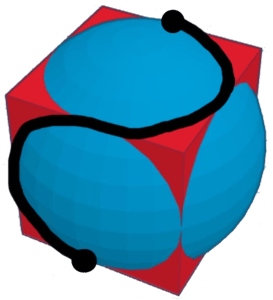Bridge Over the River
Pinkbird is trying to get to Redbird across the river. Where should we place the bridge, so that the path between the two birds becomes as short as possible?

Remark: The bridge is exactly as long as the river is wide, and must be placed straight across it. Additionally, it has some positive width.






